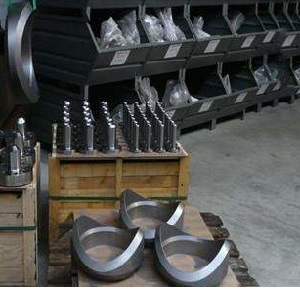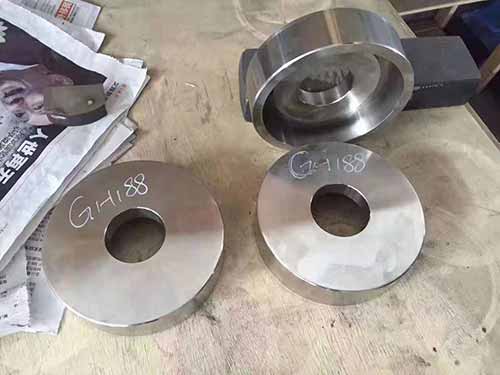Hy-industry introduces you to cobalt-based superalloy.(HY-industry technical centre)
development path
-
Development of cobalt-based superalloy In the late 1930s, cobalt-based superalloys began to be developed due to the need for turbochargers for piston-type aerospace engines. In 1942, the United States first succeeded in making turbocharger blades with the dental metal material Vitallium (Co-27 Cr-5 Mo-0.5Ti). This alloy gradually precipitates out of the carbide phase and becomes brittle during use. Therefore, the carbon content of the alloy was reduced to 0.3% while 2.6% of nickel was added to increase the solubility of the carbide forming element in the matrix, thus developing into the HA-21 alloy. In the late 1940s, the X-40 and HA-21 produced aerospace jet engines and turbochargers for casting turbine blades and guide vanes, operating at temperatures up to 850-870 °C.
-
 S-816, used in 1953 as a forged turbine blade, is an alloy that is solid solution strengthened with a variety of refractory elements. From the late 1950s to the late 1960s, four cast cobalt-based alloys were widely used in the United States: WI-52, X-45, Mar-M509, and FSX-414. Deformed cobalt-based alloys are mostly sheet materials, such as L-605 for making combustion chambers and conduits. Haynes-188, which appeared in 1966, improved its antioxidant properties due to its inclusion of antimony. The cobalt-based alloy ∏K4 used in the Soviet Union for the production of guide vanes is equivalent to HA-21. The development of cobalt-based alloys should take into account the resources of cobalt. Cobalt is an important strategic resource, and most countries in the world lack cobalt, which limits the development of cobalt-based alloys.
S-816, used in 1953 as a forged turbine blade, is an alloy that is solid solution strengthened with a variety of refractory elements. From the late 1950s to the late 1960s, four cast cobalt-based alloys were widely used in the United States: WI-52, X-45, Mar-M509, and FSX-414. Deformed cobalt-based alloys are mostly sheet materials, such as L-605 for making combustion chambers and conduits. Haynes-188, which appeared in 1966, improved its antioxidant properties due to its inclusion of antimony. The cobalt-based alloy ∏K4 used in the Soviet Union for the production of guide vanes is equivalent to HA-21. The development of cobalt-based alloys should take into account the resources of cobalt. Cobalt is an important strategic resource, and most countries in the world lack cobalt, which limits the development of cobalt-based alloys.
classification
-
 According to the purpose of use, cobalt-based alloys can be divided into cobalt-based wear-resistant alloys, cobalt-based high-temperature alloys and cobalt-based wear-resistant and aqueous corrosion-resistant alloys. Under normal working conditions, in fact, it is both wear-resistant, high-temperature resistant, wear-resistant and corrosion-resistant. Some working conditions may also require high temperature resistance, wear resistance and corrosion resistance, and the more complicated it is. Under the circumstance, the more the advantages of cobalt-based alloys can be realized.
According to the purpose of use, cobalt-based alloys can be divided into cobalt-based wear-resistant alloys, cobalt-based high-temperature alloys and cobalt-based wear-resistant and aqueous corrosion-resistant alloys. Under normal working conditions, in fact, it is both wear-resistant, high-temperature resistant, wear-resistant and corrosion-resistant. Some working conditions may also require high temperature resistance, wear resistance and corrosion resistance, and the more complicated it is. Under the circumstance, the more the advantages of cobalt-based alloys can be realized.
Heat treatment
-
The size and distribution of carbide particles in the cobalt-based alloy and the grain size are sensitive to the casting process. In order to achieve the required permanent strength and thermal fatigue properties of the cast cobalt-based alloy components, the casting process parameters must be controlled. The cobalt-based alloy needs to be heat treated, mainly to control the precipitation of carbides. For casting cobalt-based alloys, firstly, high-temperature solution treatment is carried out, and the temperature is usually about 1150 ° C, so that all primary carbides, including some MC-type carbides, are dissolved in the solid solution; and then aged at 870-980 ° C, The carbide is re-precipitated.


